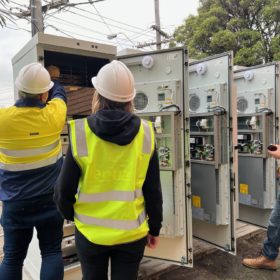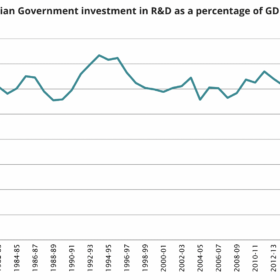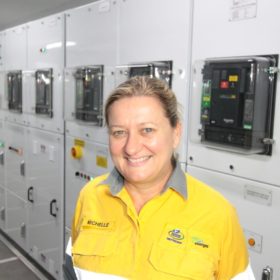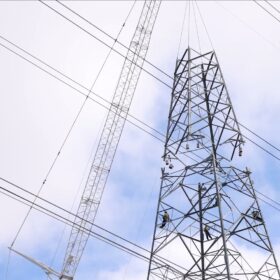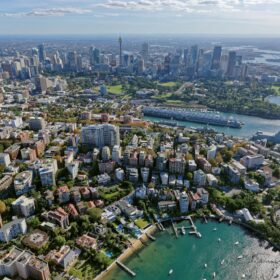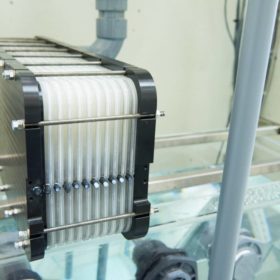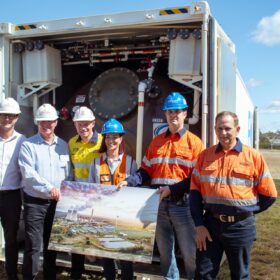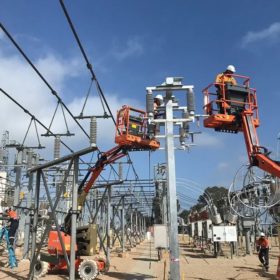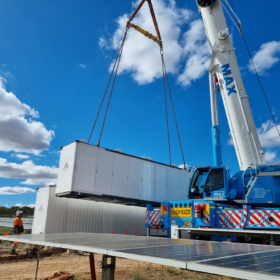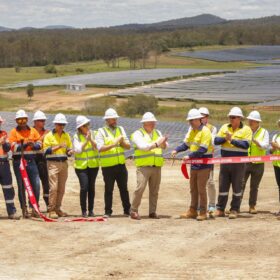Victoria launches new neighbourhood battery scheme, announces funding winners
The Victorian government has launched the first funding round of its new neighbourhood battery program and simultaneously announced the winners, mostly “business cases”, from its preexisting scheme.
Australia’s R&D spend continues to shrink despite global clean energy race intensifying
Australia continues to rank poorly for investment in science and research, spending just 1.68% of its GDP – well below the OECD average. This underinvestment is a growing problem for the clean energy industry, with fellow nations actively poaching innovations to capture future manufacturing markets.
Four Queensland towns funded to switch from diesel to solar and batteries
Four western Queensland communities powered by state-owned diesel generators are set to switch to solar and batteries, including Boulia, Burketown, Doomadgee and Windorah.
Rewiring WA: state to receive $3 billion for transmission
Australia’s federal government has allocated $3 billion (USD 1.93 billion) from its Rewiring the Nation program to upgrade Western Australia’s two islanded grids, which lag the eastern states in their renewable energy share.
Renewable PPAs see Sydney councils save $36 million
An alliance of eight Sydney councils have saved their ratepayers over $36 million (USD 23 million) by organising 100% renewable energy power purchasing agreements and working together on local energy projects.
Study finds redesigned zinc-air batteries a ‘better alternative’ to lithium
Researchers at Edith Cowan University have redesigned zinc-air batteries to an extent where the team’s study found the technology to be preferable to lithium-ion batteries, even for electric vehicles.
20 iron flow batteries delivered to Queensland coal plant, part of new technology testing hub
Queensland iron flow battery company Energy Storage Industries is delivering 1 MW/10 MWh of flow battery energy storage to Queensland’s Stanwell Power Station just outside of Rockhampton. The flow batteries are part of a new government-run clean energy testing ‘hub’ at Rockhampton, which will also include hydrogen and workforce training programs.
Weekend read: Not such a lucky country
With its critical-mineral riches, Australia is seeking to process and manufacture materials to capture more of the energy transition value chain. While logical, the path is already proving onerous and is hampered by the nation’s apparent allergy to boldness.
Ballooning connection and TNSP charges frustrate battery projects, vexation over monopolies
A sharp rise in connection and terminal station charges is stalling storage from coming online, according to an Australian developer. While the price hikes could be attributable to a quagmire of complications the industry currently faces, the developer questioned whether Australia’s TNSP monopoly system is a contributing factor.
Company developing neighbourhood battery portfolio looks to reform tariffs, connection criteria
Australian developer ACEnergy is building an initial portfolio of 10 neighbourhood batteries totalling 50 MW/100 MWh across Victoria and New South Wales. The company is also engaging networks to lobby for reforms to the connection process and tariff structure in light of grid support the technology can offer.

